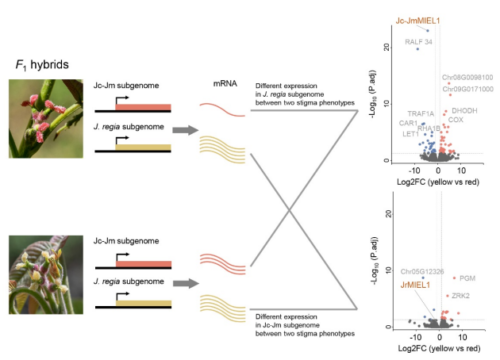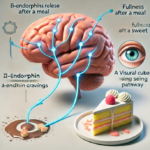2025-02-12 ワシントン大学セントルイス校
<関連情報>
- https://source.washu.edu/2025/02/lady-in-red/
- https://academic.oup.com/mbe/advance-article/doi/10.1093/molbev/msaf040/8006055
風媒受粉樹木におけるアントシアニン赤色茎の遺伝的メカニズムと適応的利益 Genetic mechanisms and adaptive benefits of anthocyanin-red stigmas in a wind-pollinated tree
Wei-Hao Wang, Susanne S Renner, Hao-Sheng Liu, Liu-Feng Dai, Cai-Jin Chen, Yi Zhang, Bo-Wen Zhang, Da-Yong Zhang, Wei-Ning Bai
Molecular Biology and Evolution Published:10 February 2025
DOI:https://doi.org/10.1093/molbev/msaf040

Abstract
Anthocyanin accumulation in leaves or flowers mitigates photooxidation damage from Reactive Oxygen Species (ROS) and functions in plant/animal interactions. Among the most conspicuously anthocyanin-accumulating tissues are stigmas, especially in wind-pollinated trees. In the walnut genus (Juglans), yellow stigmas are ancestral, but a few species have dark red stigmas. We have used a natural F1 hybrid resulting from crosses between yellow-stigma and red-stigma species to investigate the genetic basis of the red stigmas. We found that a Copia transposable element (TE) insertion in the ubiquitin-protein ligase gene MIEL1 suppresses its expression in stigmas through RNA-directed DNA methylation and has gone to fixation in red-stigma species. A younger Gypsy TE insertion fully inhibits MIEL1 expression, but is not fixed, explaining the color segregation in hybrid populations. Based on reference genomes and whole-genome sequencing data representing 20 of the 22 species of Juglans, we traced the evolution of MIEL1, finding the insertions in all consistently-red-stigma species. Red stigmas had lower levels of ROS than yellow stigmas, and population-genetic data reveal strong positive selection on the TE-bearing MIEL1 allele. In combination, these results suggest that anthocyanin-accumulating stigma tissues support pollen germination and growth by protecting cells from ROS.


